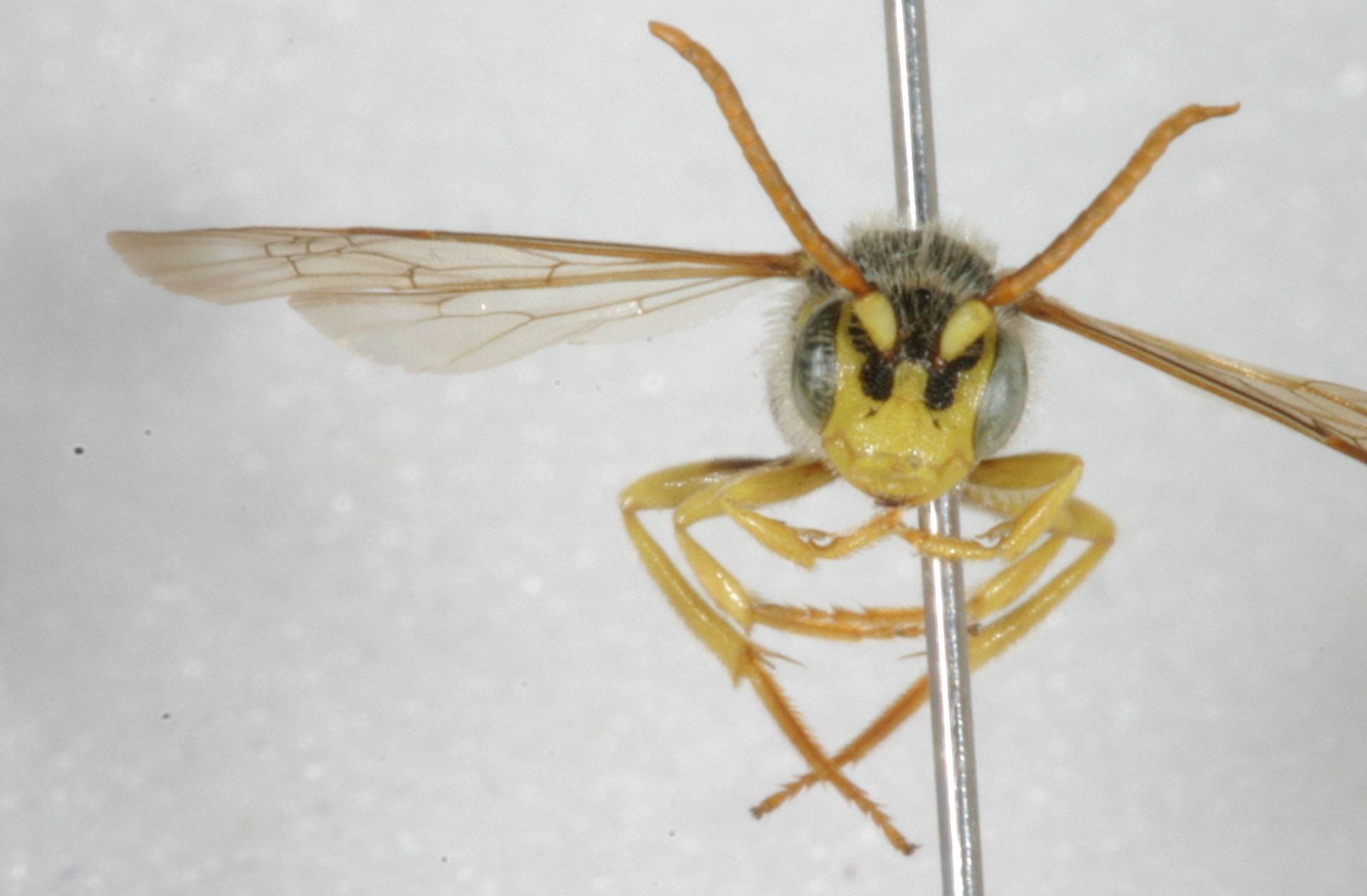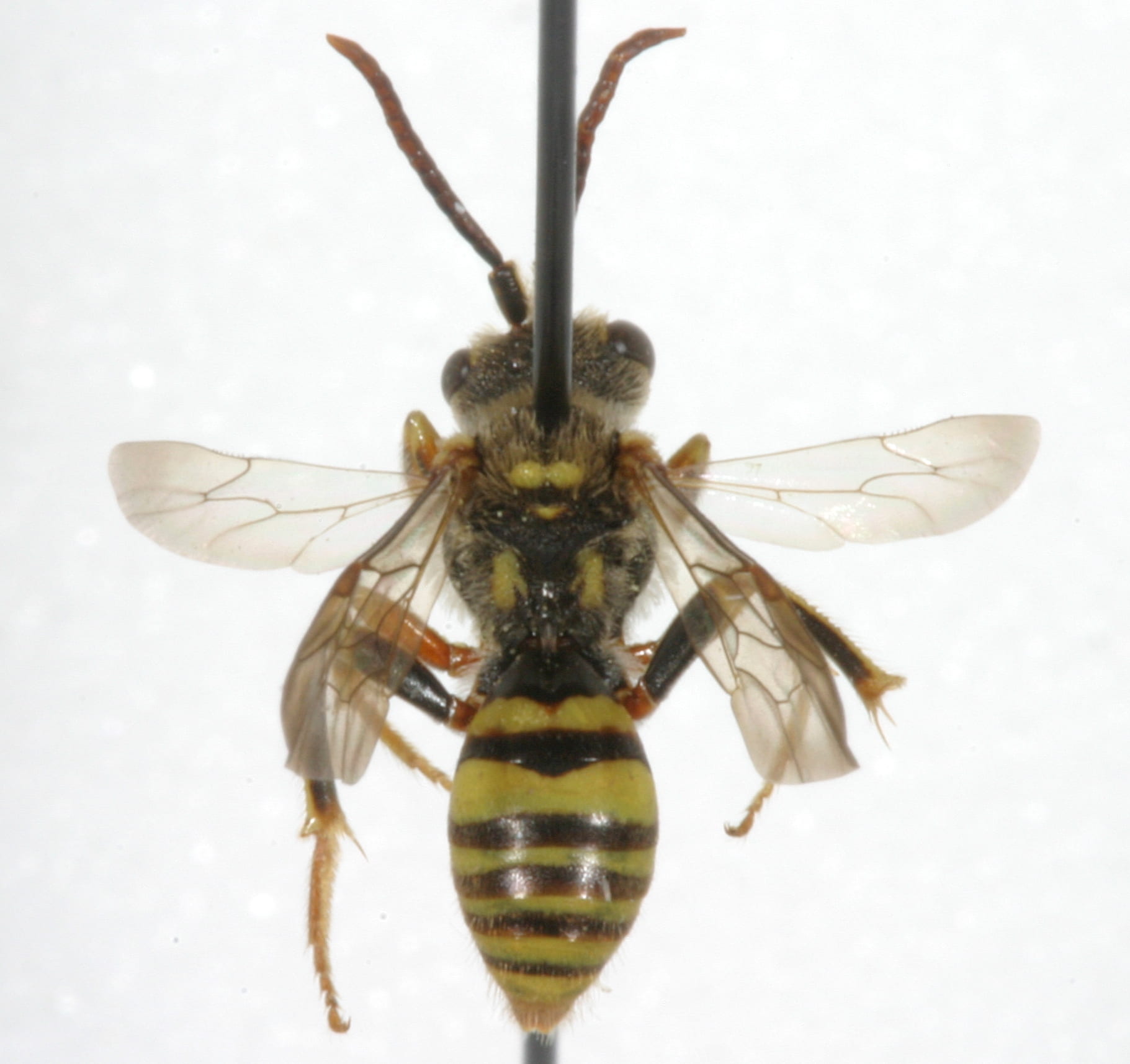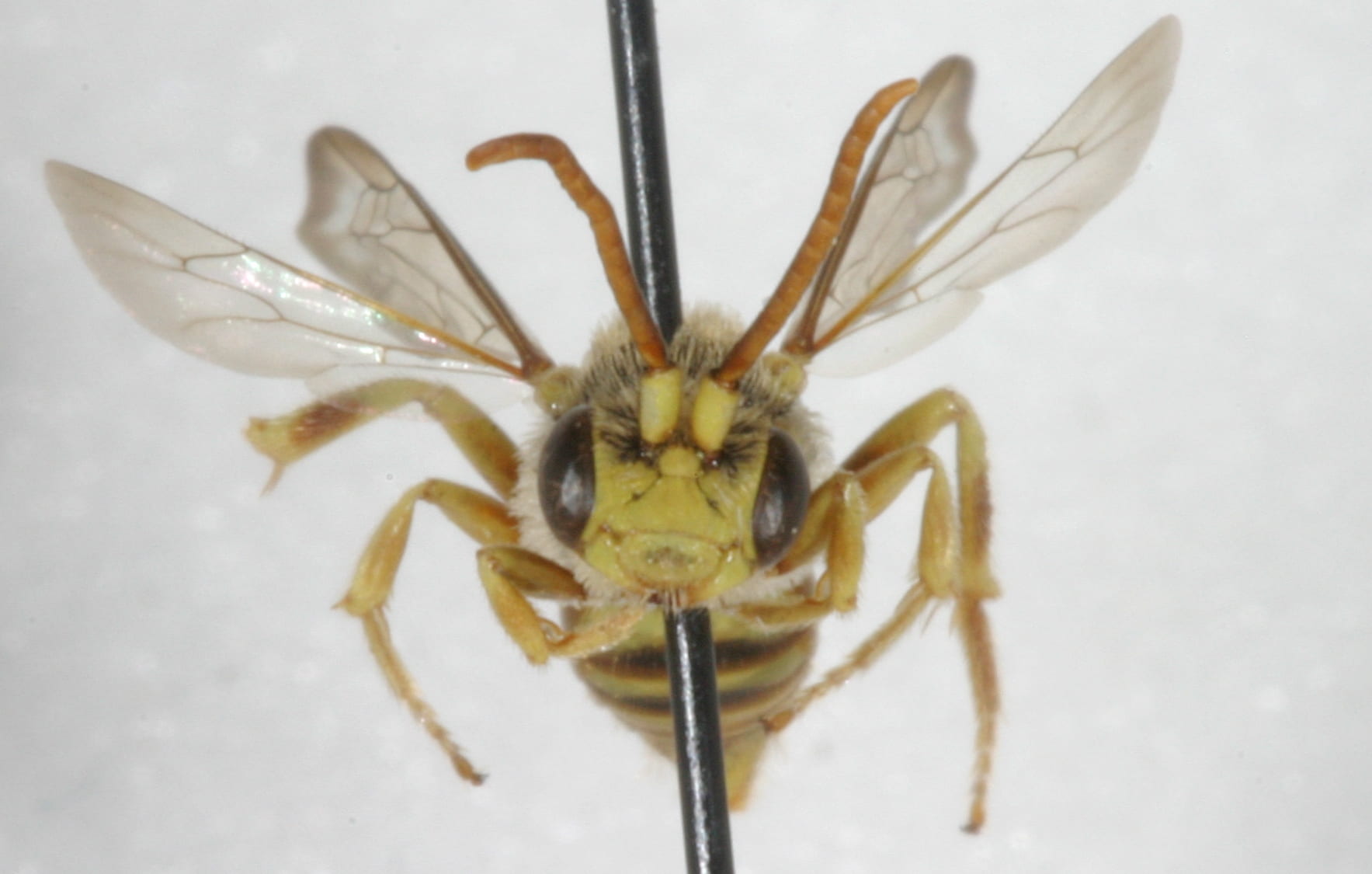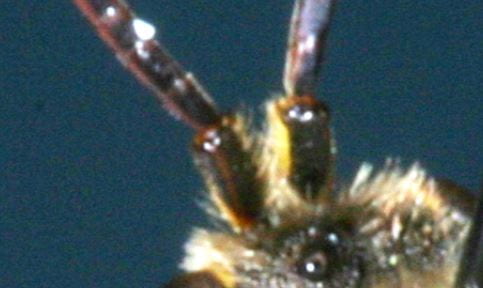Two Nomada individuals collected within 1 minute of each other at same location among approximately 15-20 bees flying over bare dirt patches in a shaded forest with known (recently sighted Andrena) nests. Are these two species or is this sexual dimorphism or variability in a single species? My leaning is a belief that the first specimen may be Nomada luteoloides and second is Nomada imbricata, both present at same site and time, and both competing for access to Andrena nests and brood chambers.
The images below show the first Nomada specimen – a male – slight separation of the yellow latitudinal band on T1 into two bars with small discontinuity. Face primarily yellow but with two black bars on sutures from base of antennal scapes – most resembles Nomada luteoloides? But these two can be hard to separate.


Second Nomada specimen – also a male? Different markings on dorsal thorax, continuous yellow band on T1, face is yellow with some dark shading but black bars absent and looks more like images for the face of Nomada imbricata


The light stripe on the posterior face of the antennal scape is said to be a character that can distinguish imbricata from luteoloides – the pale stripe is visible in the photo below on left scape – much clearer in microscope. I do not see this stripe on the first specimen.

DNA was successfully extracted and amplified on May 25th- May 26th, and the CO-I barcodes will soon be sequenced – hopefully the molecular data will clarify the identities here!
Different individual with same appearance as male #2 above, pretty clearly a female (was observed descending into ground and then emerging from ground):

Helpful guide for beginning students looking at bees: https://pubs.usgs.gov/circ/1448/cir1448.pdf
